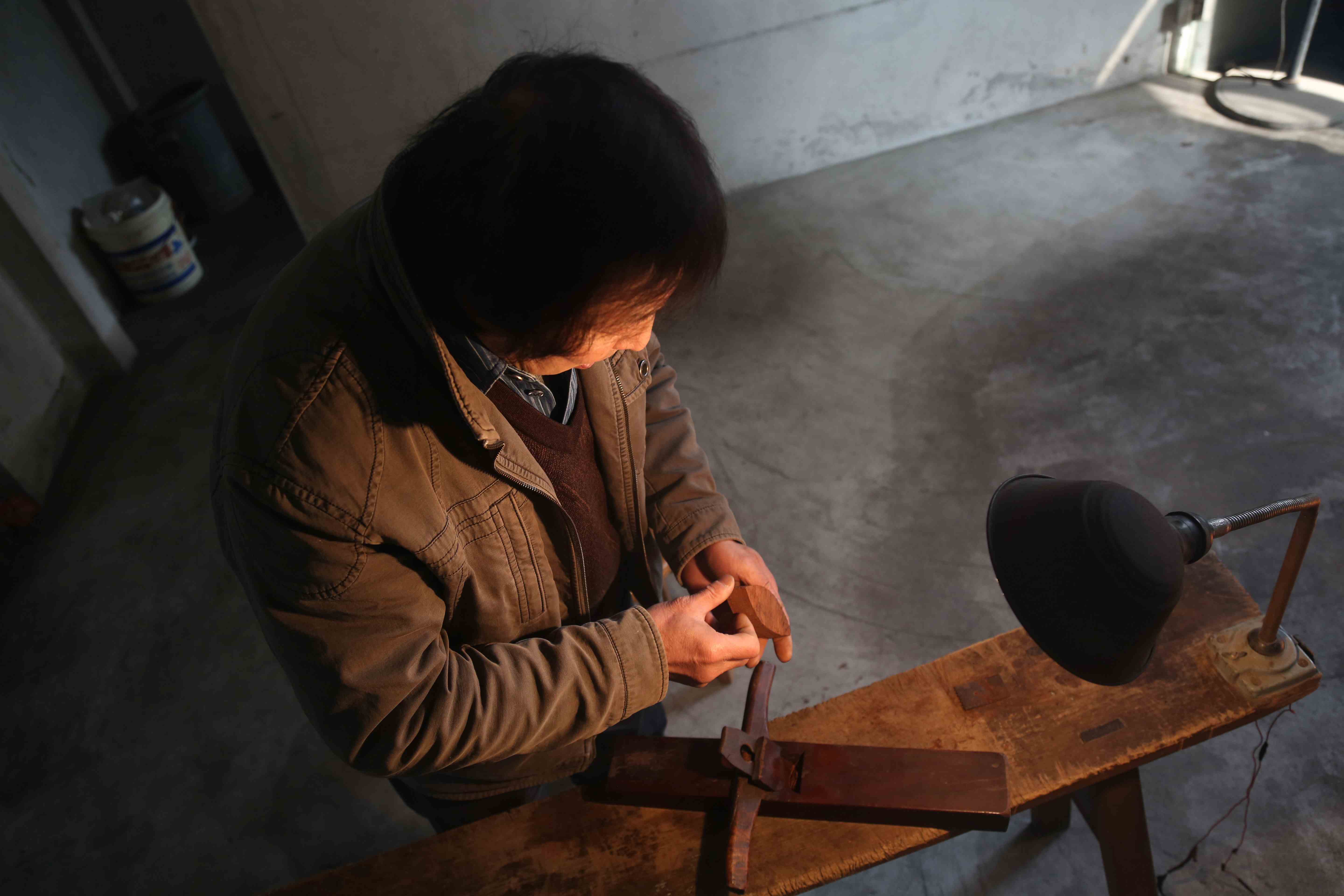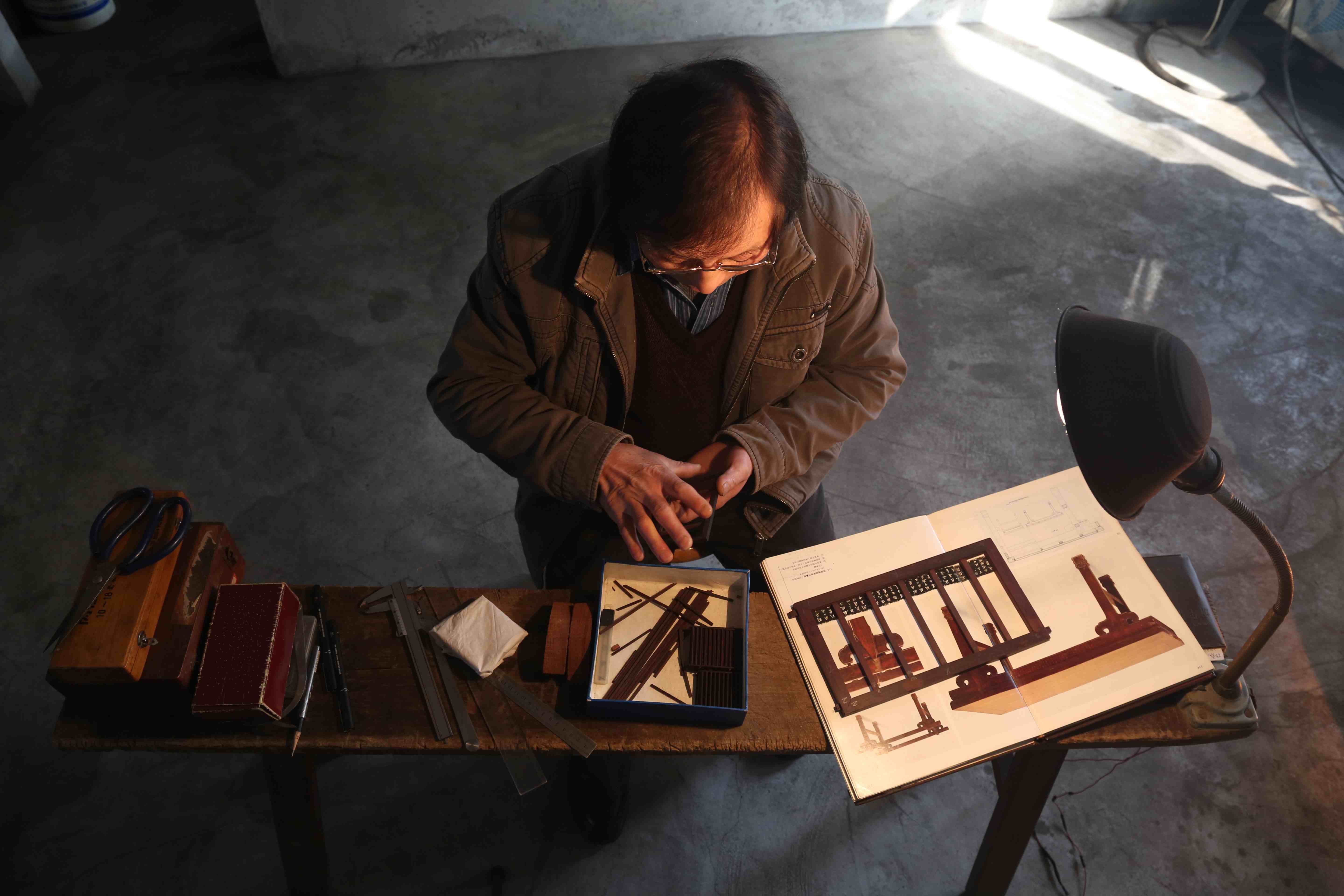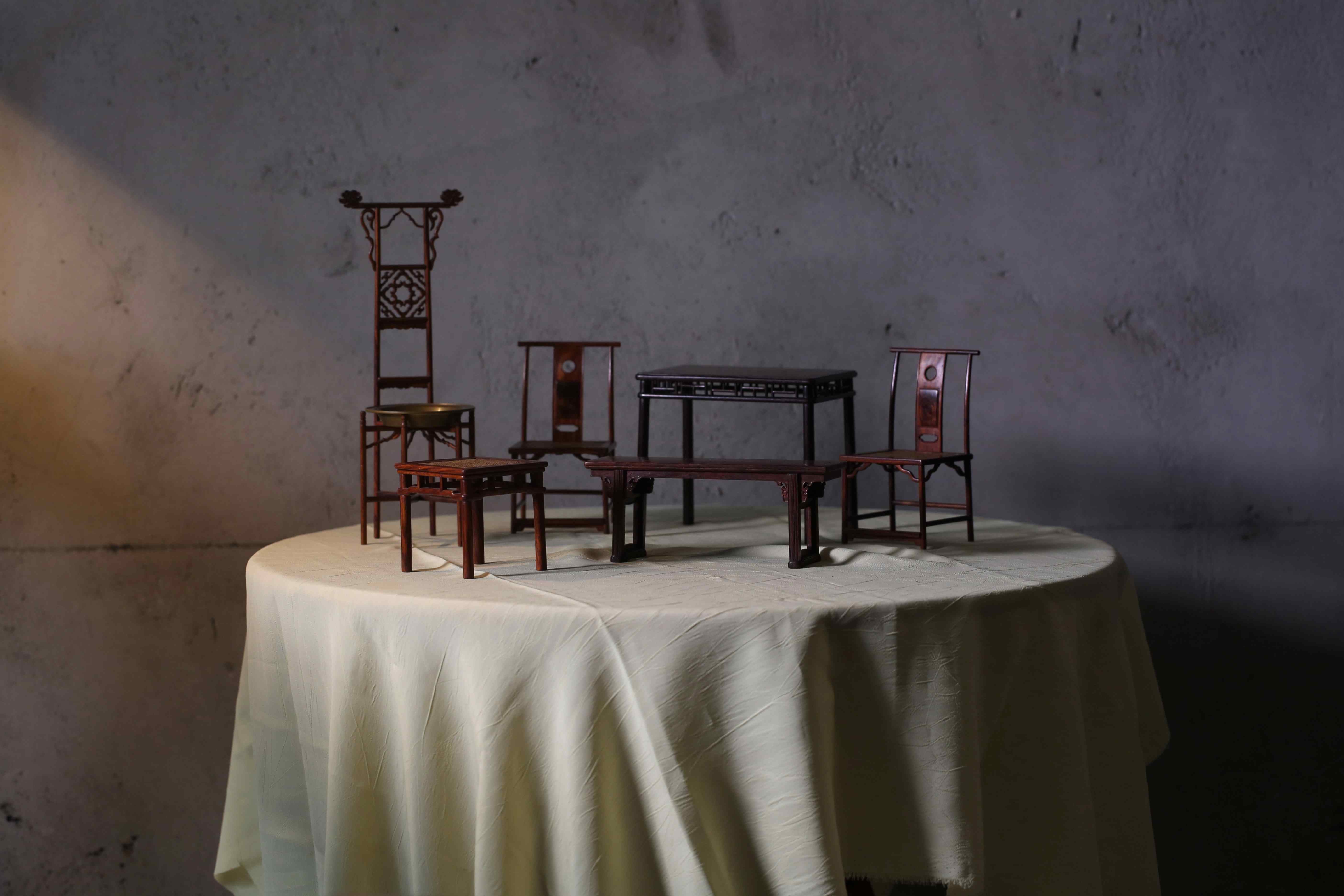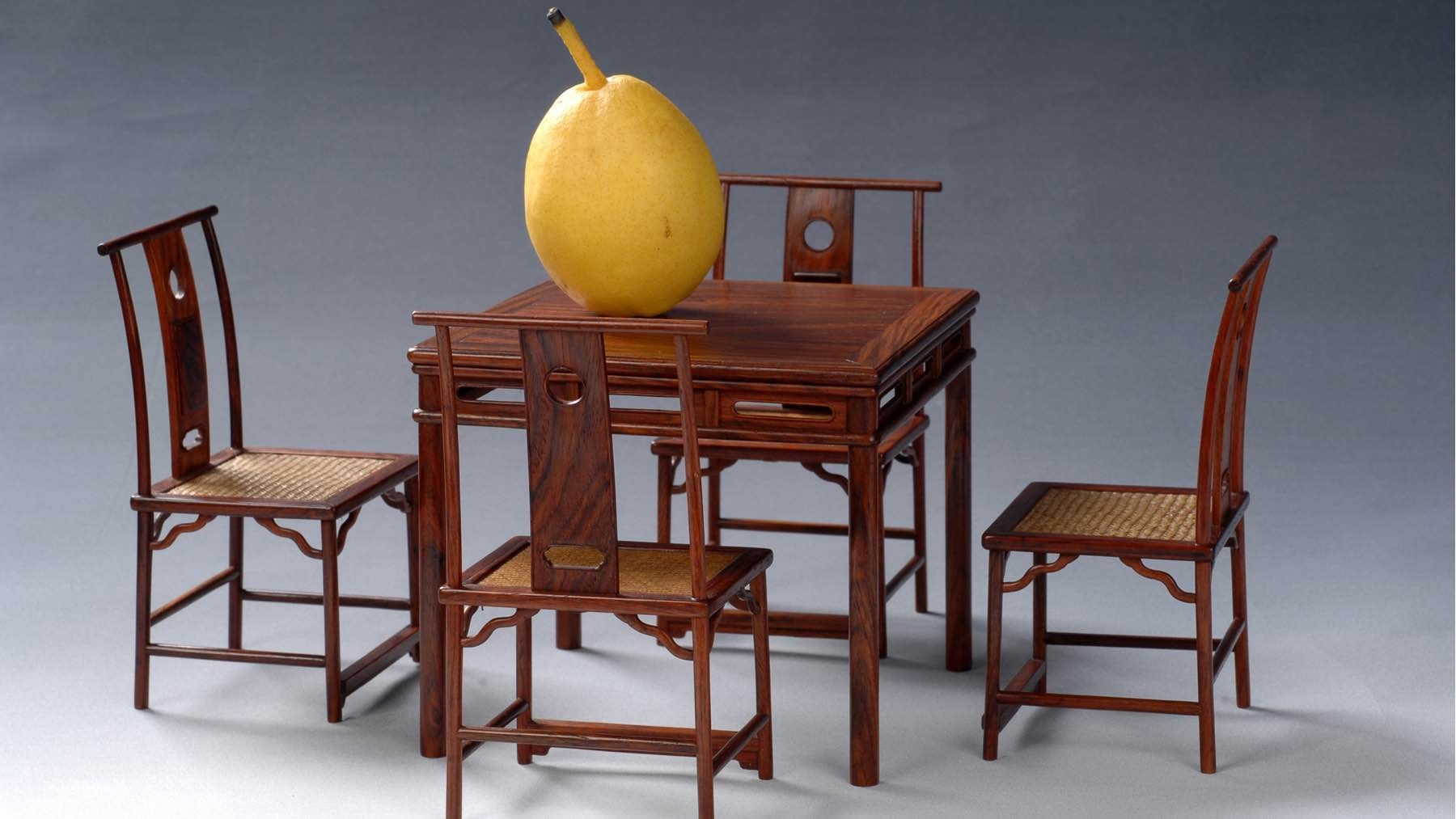“People asked me, will it work?
I smiled and said, ‘Yes, I know exactly what I am doing.’
It is difficult to figure out what makes who you are.
Some people even can’t realize in their entire lifetime.”
It’s early morning on a chilly December in central China’s Wuhan. In a rundown apartment in one of the city’s lanes, a beam of sunlight has only lit the narrow space. For many, the day hasn’t even started but 69-year-old Yan Minyi has the same kind of youthful energy when he started the project at the age of 44.
 Yan is a miniature craftsman, but he isn’t just an ordinary one. He is among a handful of people reproducing miniatures of the Ming-style furniture in a bid to preserve the style and aesthetics of China’s intangible heritage inherited from the Ming Dynasty to the early Qing Dynasty.
Yan is a miniature craftsman, but he isn’t just an ordinary one. He is among a handful of people reproducing miniatures of the Ming-style furniture in a bid to preserve the style and aesthetics of China’s intangible heritage inherited from the Ming Dynasty to the early Qing Dynasty. Today, he has come a long way, setting two Guinness World Records in 1999: making the smallest Ming-style furniture and using the smallest tool in traditional carpentry.
Today, he has come a long way, setting two Guinness World Records in 1999: making the smallest Ming-style furniture and using the smallest tool in traditional carpentry.  In his living room, he opens a red wooden chest and one by one shows the 50 miniature Ming-style furniture that he has produced, some small enough to fit on his palm and others as big as a nail: round-backed armchair, couch and basin stand, among others.
In his living room, he opens a red wooden chest and one by one shows the 50 miniature Ming-style furniture that he has produced, some small enough to fit on his palm and others as big as a nail: round-backed armchair, couch and basin stand, among others.  He then opens his toolbox, his tools even smaller than the furniture he make.
He then opens his toolbox, his tools even smaller than the furniture he make. “In 1982, I saw photos of Ming-style furniture in the magazine,” his thoughts travel back in time, fondly reminiscing the early years. “When I started researching heavily, I realized that it is one of the most sophisticated furniture in China’s history and also a highly valued treasure in the world.”
“In 1982, I saw photos of Ming-style furniture in the magazine,” his thoughts travel back in time, fondly reminiscing the early years. “When I started researching heavily, I realized that it is one of the most sophisticated furniture in China’s history and also a highly valued treasure in the world.”  “I like simplicity – so are the Ming-style furniture,” he elaborates on his fascination. “When something is really simple, it’s difficult to translate that simplicity because you’ll be able to spot the slightest flaws.”
“I like simplicity – so are the Ming-style furniture,” he elaborates on his fascination. “When something is really simple, it’s difficult to translate that simplicity because you’ll be able to spot the slightest flaws.” Ming-style furniture are known for their simplicity and also intricate design. Made during the 15th and 17th centuries in China, they exemplify China’s traditional carpentry design. It reveals the beauty of geometry and practicality, marks the highest achievement in ancient Chinese furniture making and exerts a far-reaching impact on the world.
But with time, many furniture from that time period have been destroyed, and along with it any records of its existence. Yan claims there are only around 1,000 pieces of Ming-style furniture are around the world.
 He takes deep breaths and puffs his cigarette explaining why he was attracted toward it.
He takes deep breaths and puffs his cigarette explaining why he was attracted toward it. “Some Chinese, they have little understanding of the Ming-style furniture and some just appreciate for their monetary value,” he says, adding how he has seen people destroying or selling those antique pieces without realizing their importance.
“When they are ruined and beyond repair, no one would ever know how it originally looked,” he adds. “It makes me sad. So I wish I can let people know more about it by reproducing these furniture in miniature.”
 But producing miniature furniture while retaining all the intricacies is not an easy task. Also, he didn’t have a teacher to guide him. So he read books, researched, took notes and spent his time outside his day job at a factory to make these miniatures. It was trial and error until he figured out what he calls “perfect proportions,” which allows people to see the mortise-tenon structure clearly without losing its characters.
But producing miniature furniture while retaining all the intricacies is not an easy task. Also, he didn’t have a teacher to guide him. So he read books, researched, took notes and spent his time outside his day job at a factory to make these miniatures. It was trial and error until he figured out what he calls “perfect proportions,” which allows people to see the mortise-tenon structure clearly without losing its characters. 
 “I was totally into it,” he says. “During the first 10 years, I never watched TV, survived on instant noodles and cut myself from the outside world.”
“I was totally into it,” he says. “During the first 10 years, I never watched TV, survived on instant noodles and cut myself from the outside world.”
 Almost 25 years later since he started working on his personal project, Yan says he is too old to continue working. He picks up one of his pieces and looks at it, clearly lovestruck. All of the 50 pieces he have crafted, he says, are like his children.
Almost 25 years later since he started working on his personal project, Yan says he is too old to continue working. He picks up one of his pieces and looks at it, clearly lovestruck. All of the 50 pieces he have crafted, he says, are like his children.
“Once something is destroyed, its memories fade slowly” Yan says. “In China, there are many treasures from the past, they should be protected and valued. If not, one day, people would regret it.”

Kevin Macleod’s song “Heartbreaking” used in accordance with permission granted: https://creativecommons.org/licenses/by/4.0/
Source: http://incompetech.com/music/royalty-free/index.html?isrc=USUAN1100208
Artist: http://incompetech.com/
Chris Zabriskie’s song “I Am a Man Who Will Fight for Your Honor” used in accordance with permission granted: https://creativecommons.org/licenses/by/4.0/
Source: http://chriszabriskie.com/honor/
Artist: http://chriszabriskie.com/












